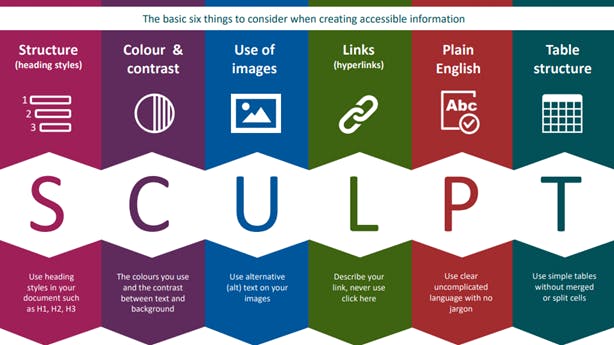Making Websites Accessible to Diverse Audiences: In the ever-evolving landscape of the digital age, the importance of inclusive design for websites cannot be overstated. We, as seasoned SEO and copywriting experts, understand that achieving high search engine rankings is essential. We can discuss more about Making Websites Accessible to Diverse Audiences.

However, it’s not just about algorithms; it’s about crafting content that resonates with a diverse audience while adhering to the principles of accessibility. In this comprehensive guide, we delve into the intricacies of inclusive design and how it can make websites accessible to a broad range of users in the United States.
Understanding Inclusive Design
Defining Inclusive Design
Inclusive design is a proactive approach to website development that ensures all individuals, regardless of their abilities or disabilities, can access and use a website. It’s about creating a digital environment that considers the needs of everyone, including those with visual, auditory, motor, or cognitive impairments. We can check out more about Making Websites Accessible to Diverse Audiences.
The Legal Landscape
In the United States, websites are subject to accessibility regulations, such as the Americans with Disabilities Act (ADA) and Section 508 of the Rehabilitation Act. These regulations mandate that public and private entities make their digital platforms accessible to individuals with disabilities.
The Benefits of Inclusive Design
Expanding Your Audience
Incorporating inclusive design principles broadens your website’s reach. By accommodating individuals with disabilities, you tap into a vast, underserved market. This not only boosts your website’s traffic but also opens up new business opportunities.

Enhancing The User user experience
Inclusive design isn’t just about compliance; it’s about creating a better user experience for everyone. Improved navigation, readability, and functionality benefit all users, making your website more user-friendly and enjoyable.
Key Principles of Inclusive Design
1. Accessibility Features
Integrate accessibility features, such as alt text for images, captions for videos, and keyboard navigation. These simple yet impactful additions make your website more user-friendly for individuals with disabilities.

2. Clear and Consistent Layouts
Maintain a clean and consistent layout throughout your website. This ensures that users can easily navigate and find the information they need without confusion.
3. Color Contrast
Pay attention to color contrast when designing your website. Proper contrast ensures that text is legible for those with visual impairments, and it also enhances the overall aesthetic.
4. Alternative Content
Provide alternative content options, like transcripts for audio content and text versions of visual information. This allows users to consume content in a format that suits their needs. We can see about Making Websites Accessible to Diverse Audiences.
The Role of Keywords in Inclusive Design
Keywords play a pivotal role in ensuring your inclusive design efforts are visible online. To outrank your competitors and promote inclusive web design, consider these strategies:
Read More:
1. Keyword Research
Conduct thorough keyword research to identify the terms and phrases relevant to your content. Include keywords related to accessibility, diversity, and inclusion to align with the theme of your website. We can discover more about Making Websites Accessible to Diverse Audiences.

2. Keyword Placement
Strategically place keywords in your headings, subheadings, and body content. Ensure that your content flows naturally while incorporating these keywords.
3. Schema Markup
Implement schema markup to provide search engines with additional context about your content. This can boost your website’s visibility in search engine results pages (SERPs).
Ensuring Mobile Accessibility
With the increasing use of mobile devices, mobile accessibility is a critical aspect of inclusive design. Follow these steps to optimize your website for mobile users:

1. Responsive Design
Employ responsive web design techniques to ensure your website adapts seamlessly to various screen sizes and orientations.
2. Touch-Friendly Navigation
Create touch-friendly buttons and navigation menus for users who rely on touchscreens.
3. Testing and User Feedback
Regularly test your website on different mobile devices and gather user feedback to make necessary improvements.
Conclusion
Inclusive design is not just a legal requirement; it’s a moral and business imperative. By embracing inclusivity, you not only make your website accessible to a diverse audience in the USA but also improve user experience and expand your online presence. To rank higher on Google and stay ahead in the digital world, remember that inclusivity is the key to success.
If you want to read more information about how to boost traffic on your Website, just visit –> https://pixelcrafters.us/
Unleash Your Digital Website Potential with Pixel Crafters
Discover the power of digital marketing and web design with Pixel Crafters! Located at 1201 West Esplanade Ave Apt. 303, Kenner, our expert team is your go-to partner for unleashing your brand’s true potential online.
From stunning web design and development to targeted social media marketing and Google Ads services, we craft tailored solutions to boost your online presence. Amplify your visibility with our top-notch SEO services and engage your audience through effective email marketing campaigns.
Simplify your business processes with our automation services. At Pixel Crafters, we are your all-in-one digital solution, empowering small and medium-sized businesses to thrive in the digital world. Call us today at +18882290966 and witness the transformation! Also get technical support and technical assistance in USA from the expert. We are Powered by ARGUSDNA